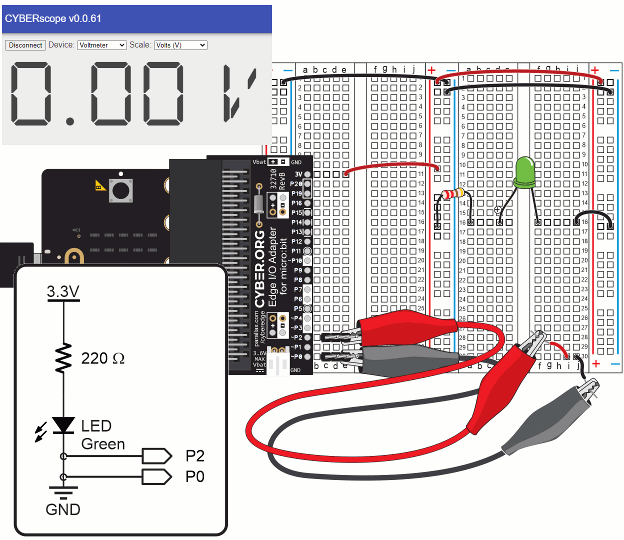
What it’s about
In these activities, you will take basic electrical measurements: voltage, resistance, and current. Along the way, you will learn some important rules about voltage, current and resistance behaviors in certain circuits and under certain conditions.
Being able to measure what’s happening in a circuit and understand what it means is a key ingredient in the success of many inventions. Engineers use measurements to troubleshoot their inventions and prototypes. Technicians use it to maintain and repair everything from cell phones, to supermarket doors, to main power grid components.
Before you start
You will need:
- A What's a Microcontroller with Python and micro:bit kit (#32750).
- A computer with a Chrome browser and available USB 2.0 compatible port.
Complete these tutorials first:
- Get Started with micro:bit and Python
- Writing micro:bit programs
- Computer - micro:bit Talk
- Breadboard Setup and Testing for micro:bit.
After You Finish
You will be able to:
- Correctly measure voltage, resistance, and current with your micro:bit multimeter
- Differentiate between series and parallel circuits
- Calculate equivalent resistances connected in series and parallel
- Use two of three Ohm’s law quantities (voltage, resistance and current) to calculate the third.
- Correctly interpret International System of Units (SI) prefixes and units like kΩ, mA, MHz and more.
- Convert from SI prefixes to decimal numbers and back
